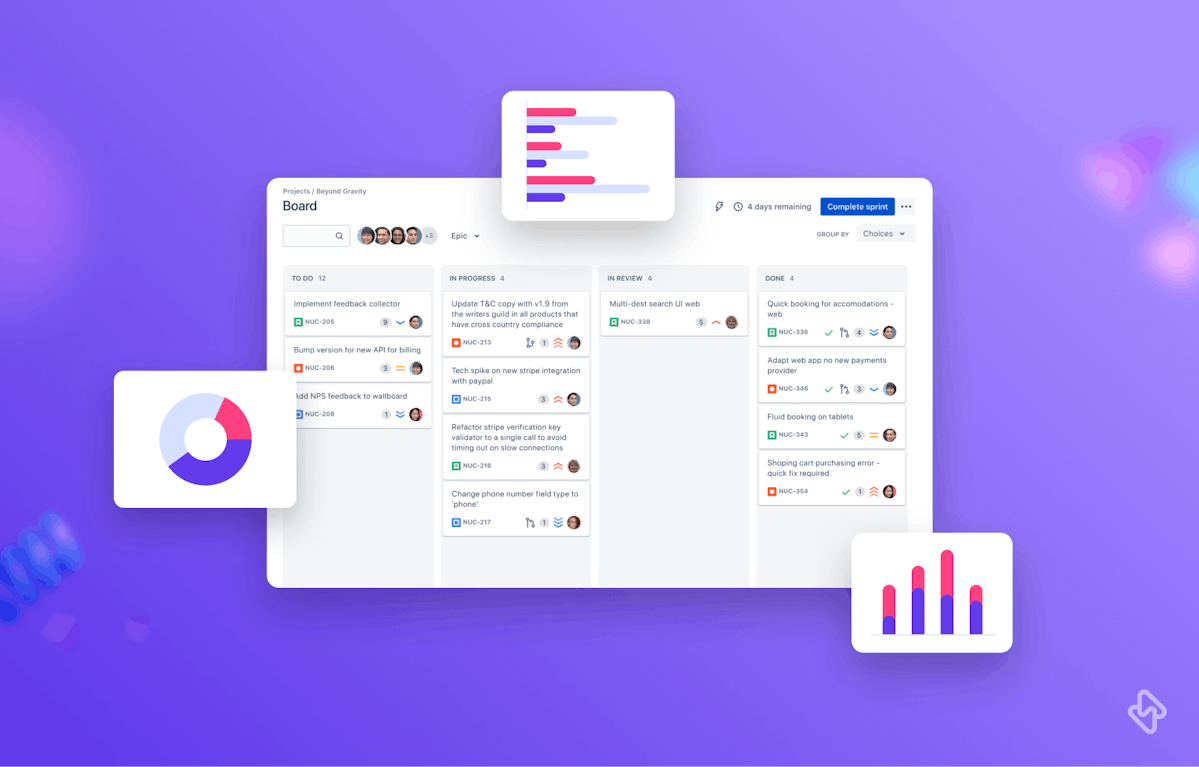Jira, developed by Atlassian, is a powerful tool designed to help teams manage their projects, track progress, and collaborate effectively. It has become an essential part of Agile project management, and knowing how to use it efficiently can give your team a significant advantage. In this article, we'll walk you through the process of setting up and using Jira for your next sprint, providing valuable tips and insights along the way.
Setting up your Jira Environment for Future Sprint
A. Creating a new project
- Choosing the right template: Jira offers various templates for different project types. To start, select the template that best suits your needs. For Agile projects, choose either the Scrum or Kanban template.
- Configuring project settings: After selecting a template, customize the project settings to fit your team's requirements. Set up roles, and permissions, and configure notifications to keep everyone informed.
B. Configuring Jira board
- Creating columns and swimlanes: The Jira board is where your team will track and manage tasks during the sprint. Set up columns to represent the stages of your workflow (e.g., To Do, In Progress, Done). You can also create swimlanes to categorize issues based on criteria like priority or assignee.
- Customizing board settings: Tailor your board settings to your team's preferences. Adjust column constraints, configure quick filters, and enable or disable various board features.
How to Prepare for Future Sprints?
A. Creating and refining user stories
- Writing clear and concise user stories: User stories describe the features and requirements of your project from the end user's perspective. Write them in simple, understandable language, and include a clear description of the desired outcome.
- Estimating story points: Assign a story point value to each user story based on its complexity and the effort required. This estimation will help your team prioritize work and plan sprints more effectively.
B. Sprint Planning
- Prioritizing the product backlog: Review and rank user stories in the product backlog according to their importance and dependencies. This process ensures that your team is working on the most valuable tasks first.
- Selecting user stories for the sprint: Determine which user stories will be tackled in the upcoming sprint based on their priority and the team's capacity. Add these user stories to the sprint backlog.
- Assigning tasks to team members: Break down user stories into smaller tasks and assign them to team members based on their expertise and availability.
- Setting sprint goals: Define the overall objectives for the sprint, providing your team with a clear direction and purpose.
Also, you can read the detailed article on Sprint Planning here!
Running the Sprint
A. Sprint tracking
Monitoring team progress: Keep track of each team member's progress by regularly reviewing their task status on the Jira board. This will help you ensure that the sprint is on track and identify any issues that may require attention.
B. Daily stand-ups
Updating task status in Jira: Encourage team members to update their task status in Jira daily. This practice keeps the board up-to-date and provides an accurate reflection of the team's progress.
Adapting to changes during the Sprint
A. Managing Scope Changes
- Evaluating the impact: When changes to the scope or requirements arise, assess their impact on the sprint goals, team capacity, and overall project timeline.
- Updating the sprint backlog: If necessary, update the sprint backlog to accommodate changes in scope. This may involve removing or adding tasks, adjusting task priorities, or reassigning tasks to team members.
B. Handling Unforeseen Obstacles
- Identifying and addressing blockers: Encourage team members to communicate any obstacles or blockers they encounter. Work together to find solutions and keep the sprint on track.
- Adjusting the sprint plan: If unforeseen challenges arise, be flexible and willing to adjust the sprint plan as needed. This may involve reallocating resources, re-prioritizing tasks, or even extending the sprint duration.
Closing the Sprint
A. Sprint Review
- Demonstrating completed work: At the end of the sprint, showcase the completed user stories and demonstrate the functionality to stakeholders. This provides an opportunity to gather feedback and ensure that the work meets the defined acceptance criteria.
- Updating the product backlog: Based on the sprint review feedback, update the product backlog to reflect any new requirements or changes in priorities.
For more insights on sprint retrospectives, you can explore our detailed guide on sprint retrospectives.
Conclusion
Jira is a powerful tool that, when used effectively, can greatly enhance your team's project management capabilities. By following this comprehensive guide, you can set up and use Jira for your next sprint, allowing your team to collaborate, prioritize, and track progress more efficiently.
To further enhance your team's productivity, consider integrating Jira with other tools your team uses, such as Slack, Trello, or Google Calendar. By connecting these tools, you can centralize communication and create a seamless workflow, allowing your team to stay organized and focused on what truly matters: delivering high-quality products on time. Explore Jira's vast ecosystem of add-ons and integrations to find the perfect combination for your team's unique needs.
As you continue to use Jira, remember to embrace Agile principles, streamline communication, and continuously improve your processes and practices to ensure your team's ongoing success.
Subscribe to the Hatica blog today to read more about unblocking developers, and boosting productivity with engineering analytics.





